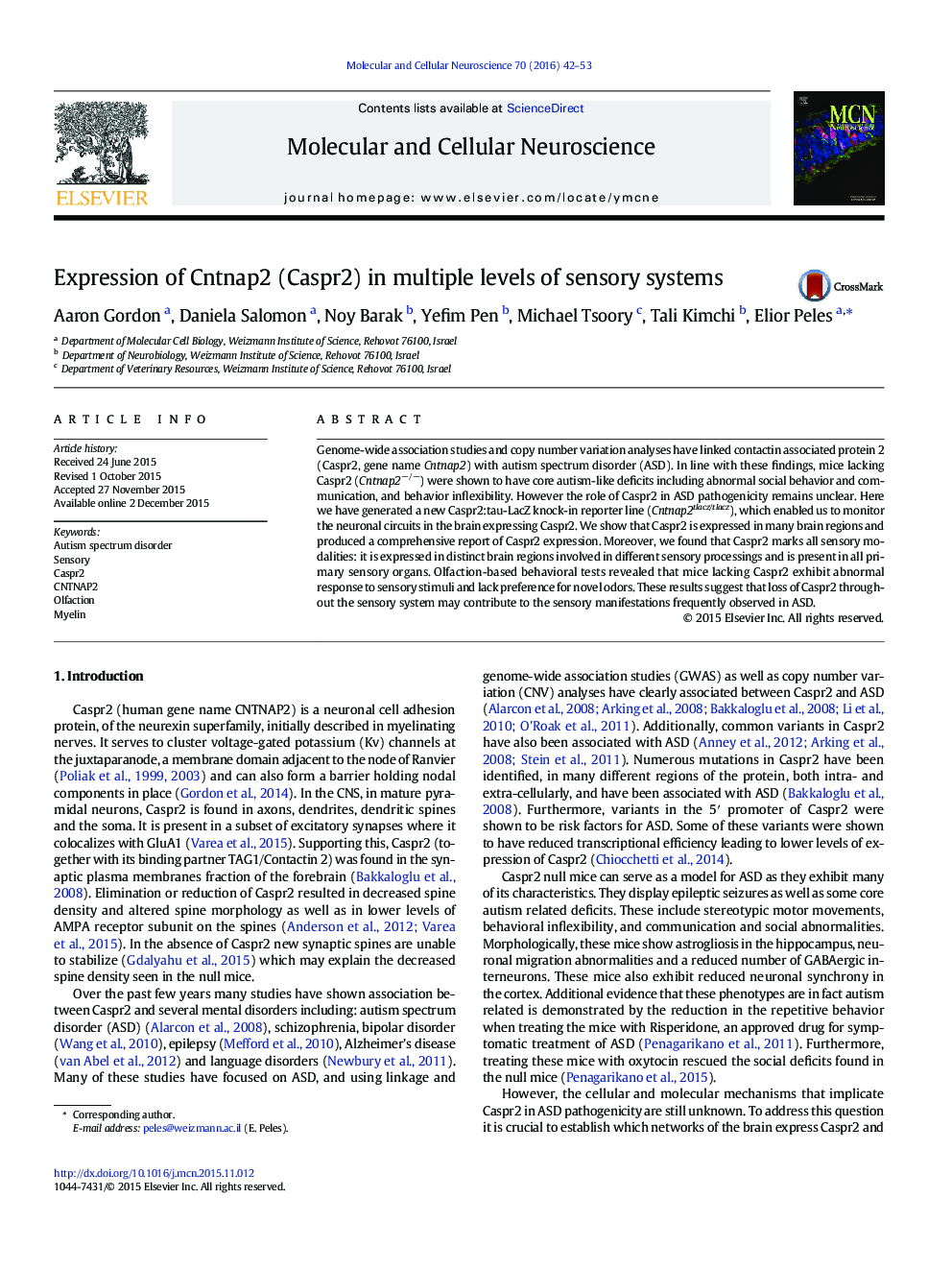| Article ID | Journal | Published Year | Pages | File Type |
|---|---|---|---|---|
| 8478513 | Molecular and Cellular Neuroscience | 2016 | 12 Pages |
Abstract
Genome-wide association studies and copy number variation analyses have linked contactin associated protein 2 (Caspr2, gene name Cntnap2) with autism spectrum disorder (ASD). In line with these findings, mice lacking Caspr2 (Cntnap2â/â) were shown to have core autism-like deficits including abnormal social behavior and communication, and behavior inflexibility. However the role of Caspr2 in ASD pathogenicity remains unclear. Here we have generated a new Caspr2:tau-LacZ knock-in reporter line (Cntnap2tlacz/tlacz), which enabled us to monitor the neuronal circuits in the brain expressing Caspr2. We show that Caspr2 is expressed in many brain regions and produced a comprehensive report of Caspr2 expression. Moreover, we found that Caspr2 marks all sensory modalities: it is expressed in distinct brain regions involved in different sensory processings and is present in all primary sensory organs. Olfaction-based behavioral tests revealed that mice lacking Caspr2 exhibit abnormal response to sensory stimuli and lack preference for novel odors. These results suggest that loss of Caspr2 throughout the sensory system may contribute to the sensory manifestations frequently observed in ASD.
Related Topics
Life Sciences
Biochemistry, Genetics and Molecular Biology
Cell Biology
Authors
Aaron Gordon, Daniela Salomon, Noy Barak, Yefim Pen, Michael Tsoory, Tali Kimchi, Elior Peles,
